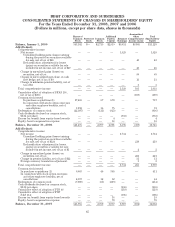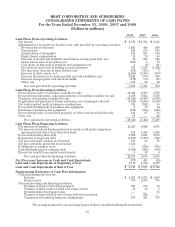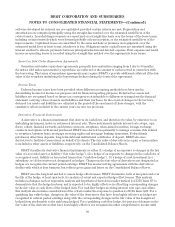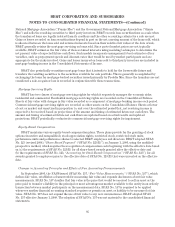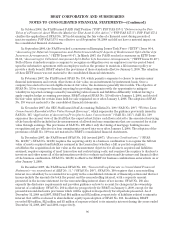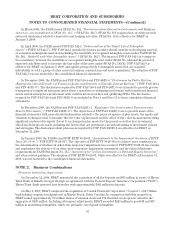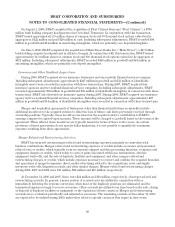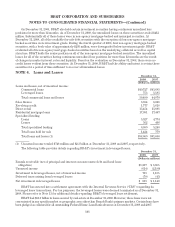BB&T 2008 Annual Report Download - page 91
Download and view the complete annual report
Please find page 91 of the 2008 BB&T annual report below. You can navigate through the pages in the report by either clicking on the pages listed below, or by using the keyword search tool below to find specific information within the annual report.BB&T CORPORATION AND SUBSIDIARIES
NOTES TO CONSOLIDATED FINANCIAL STATEMENTS—(Continued)
for loans held for sale is primarily based on quoted market prices for securities backed by similar types of loans.
Following the adoption of SFAS No. 159, direct loan origination fees and costs related to loans held for sale for
which the Fair Value Option has been elected are no longer capitalized and recognized in earnings upon the sale
of such loans, but rather are recorded as mortgage banking income in the case of the direct loan origination fees
and primarily personnel expense in the case of the direct loan origination costs. Gains and losses on sales of
mortgage loans are included in mortgage banking income.
Loans and Leases
Loans and leases that management has the intent and ability to hold for the foreseeable future are reported
at their outstanding principal balances net of any unearned income, charge-offs, unamortized fees and costs on
originated loans and unamortized premiums or discounts on purchased loans. The net amount of nonrefundable
loan origination fees and certain direct costs associated with the lending process are deferred and amortized to
interest income over the contractual lives of the loans using methods which approximate the interest method.
Discounts and premiums are amortized or accreted to interest income over the estimated life of the loans using
methods that approximate the interest method. Commercial loans and substantially all installment loans accrue
interest on the unpaid balance of the loans.
Lease receivables consist primarily of investments in leveraged lease transactions and direct financing leases
on rolling stock, equipment and real property. Direct financing lease receivables are stated at the total amount of
future minimum lease payments receivable plus estimated residual values and initial direct costs, less unearned
income. Leveraged leases are also carried net of non-recourse debt. Income is recognized over the lives of the
lease contracts using the interest method. BB&T also enters into operating leases as lessor. Operating lease
equipment is carried at cost less accumulated depreciation and is depreciated to the estimated residual value
using the straight-line method over the lesser of the lease term or projected economic life of the equipment.
BB&T estimates the residual value at the inception of each lease. In addition, BB&T reviews residual values at
least annually, and monitors the residual realizations at the end of the lease term. If the review of the estimated
residual values indicates potential impairment and this decline is other than temporary, such impairment is
recognized in current period earnings. Estimated residual values are evaluated using information that includes
both internal and external appraisals and historical residual realization experience.
BB&T classifies loans and leases past due when the payment of principal and interest based upon contractual
terms is greater than 30 days delinquent.
Nonperforming Assets
Nonperforming assets include loans and leases on which interest is not being accrued and foreclosed
property. Foreclosed property consists of real estate and other assets acquired as a result of customers’ loan
defaults. BB&T’s policies related to when loans are placed on nonaccrual status conform to guidelines prescribed
by bank regulatory authorities. Commercial loans and leases are placed on nonaccrual status when concern exists
that principal or interest is not fully collectible, or generally when principal or interest becomes 90 days past due,
whichever occurs first. Sales finance loans, revolving credit loans, direct retail loans and mortgage loans are
placed on nonaccrual status at varying intervals, based on the type of product, when principal and interest
becomes between 90 days and 180 days past due. Specialized lending loans are placed on nonaccrual status
generally when principal and interest becomes 90 days past due. Certain loans past due 90 days or more may
remain on accrual status if management determines that it does not have concern over the collectibility of
principal and interest. Generally, when loans are placed on nonaccrual status, interest receivable is reversed
against interest income in the current period. Interest payments received thereafter are applied as a reduction to
the remaining principal balance as long as concern exists as to the ultimate collection of the principal. Loans and
leases are removed from nonaccrual status when they become current as to both principal and interest and
concern no longer exists as to the collectibility of principal and interest.
91






